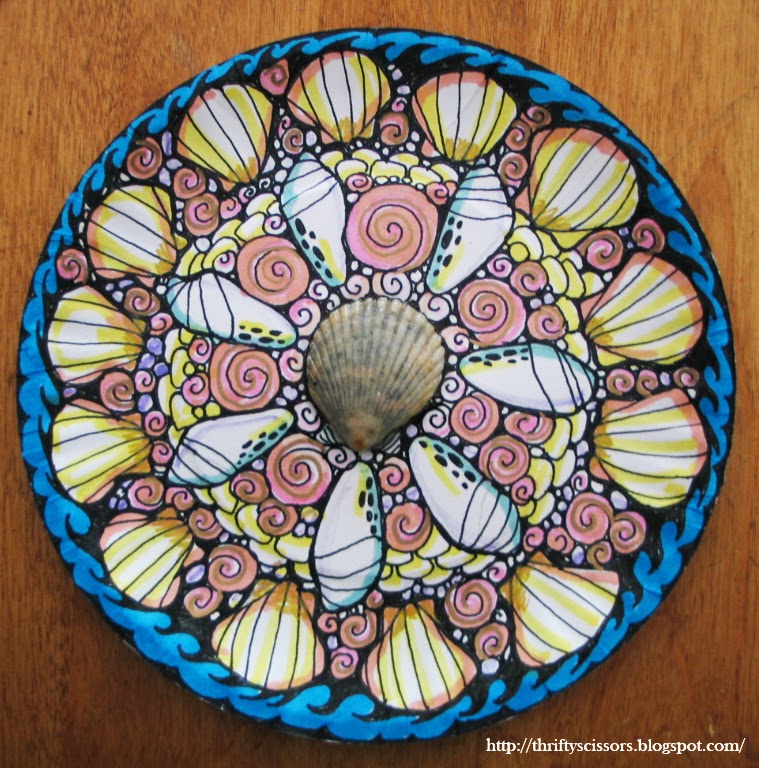 |
| "The Rainbow Fish" by Pfister. |
The Rainbow Fish is an award-winning children's book drawn and written by Marcus Pfister, Swiss author and illustrator, and translated into English by J. Alison James. The book is best known for its morals about the value of being an individual and for the distinctive shiny foil scales of Rainbow Fish. Decode Entertainment turned the story into an animated television series of the same name, which has aired on the HBO Family television channel in the United States since 1999. Read more...
I designed my own versions of rainbow fish for my preschoolers from extra thick, large, white paper plates. Because I am working with preschoolers, I will need to assemble the project up to the point of coloring for these little ones. However, 1rst and 2nd grade teachers may choose to teach every step to their students over a period of two to three sessions.
- scissors
- white school glue
- magic markers
- stapler
- glitter or metallic paper for scales
- pattern (below)
- two large white paper plates
- white typing paper
- white string
- Print and cut out the pattern. Cut the body first and then trace it onto the inside of a large, white, paper plate. Then flip the pattern over and trace it again to the inside of an additional large, white, paper plate. Cut out these two fish and staple them together with the fins facing fan out.
- Cut out the face pattern and trace around it twice onto a piece of white typing paper. Then cut these two faces out and staple them both to the correct position on top of each side of the paper fish.
- Draw both the fins, eyes, and mouth onto each side of the dimensional paper fish.
- Paint or color the fish on both sides
- Cut additional fins (circles) from metallic paper and glue these between the fish face and body.
- Then paste down the edge of the fish face to the paper fish body where the scales meet the fishy cheeks.
- Staple a long string between the two fish bodies to hang your school of rainbow fish from the ceiling.
 |
| The blue side of my teacher's sample. |
 |
| This is the back side, orange version of my teacher's sample. |
- Kid's Craft-Rainbow Fish
- Ocean Theme - Tissue Paper & Foil Rainbow Fish Craft
- Make razzle-dazzle fish!
- Raindrop/Rainbow Fish
- Recycled rainbow fish from old CDs
- Rainbow Fish Coffee Filter Craft
By Marcus Pfister. Read by Ernest Borgnine.
"The Rainbow Fish is an award-winning book about a beautiful fish who finds friendship and happiness when he learns to share. The book is best known for its morals about the value of being an individual and for the distinctive shiny foil scales of the Rainbow Fish." Visit Storyline Online for more videos.
"The Rainbow Fish is an award-winning book about a beautiful fish who finds friendship and happiness when he learns to share. The book is best known for its morals about the value of being an individual and for the distinctive shiny foil scales of the Rainbow Fish." Visit Storyline Online for more videos.
Are there such things are real rainbow fish? The rainbowfish are a family (Melanotaeniidae) of small, colourful, freshwater fish found in northern and eastern Australia, New Guinea, islands in Cenderawasih Bay, and the Raja Ampat Islands. The largest rainbowfish genus, Melanotaenia, derives from the ancient Greek melano (black) and taenia
(banded). Translated, it means "black-banded", and is a reference to
the often striking lateral black bands that run along the bodies of
those in the Melanotaenia genus. Read more...
More activities and lessons used with "The Rainbow Fish"



























